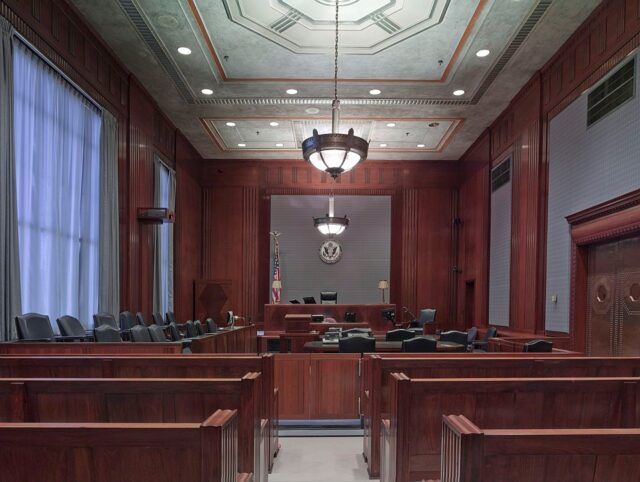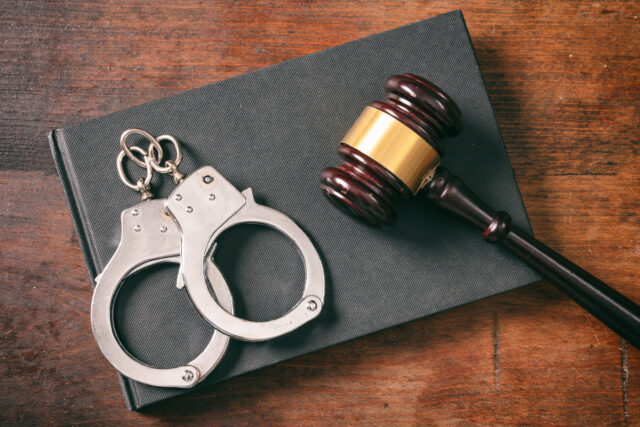When you’re dealing with the gravity of assault with deadly weapon charges-deadly weapon charges hanging over you, understanding the nuances of the legal system becomes paramount. These charges carry severe consequences and can upend your life. But is there a glimmer of hope? Can such grave accusations be dismissed?
This deep-dive article unpacks the criteria, procedures, and legal maneuvers that might just turn the tide in favor of those facing these daunting charges. Whether you’re the accused, a concerned family member, or someone on the quest to comprehend the legal landscape regarding violent crime allegations, this comprehensive guide sheds light on the complexities involved.
From exploring the potential for charge dismissal to dissecting the intricate dynamics between defendant rights, evidence, legal strategy, and judicial discretion, you’ll discover the factors that can influence the course of a case involving assault with a deadly weapon.
Understanding Assault with Deadly Weapon Charges
Assault with a deadly weapon, a term that evokes images of life-threatening scenarios, is an offense that the justice system takes very seriously. But what does this charge entail, and why is understanding it crucial for those facing legal repercussions?
First, let’s clarify what constitutes a “deadly weapon.” While guns and knives immediately come to mind, the definition is broader. Any object capable of causing severe bodily harm or death, including vehicles, blunt objects, or even seemingly innocuous items used with lethal intent, can fall under this category.
The elements of the charge typically include:
- The act of assault is an attempt or threat to inflict harm.
- The use or presence of a deadly weapon during the act.
- The intention is to cause fear or harm to the victim.
To face an assault with a deadly weapon charge, the perpetrator doesn’t need to have physically harmed the victim — the mere presence of a threatening scenario involving a dangerous item may suffice.
Now, why is understanding this significant? For one, it influences defenses that can be presented in court. If the accused can debunk any element of the charge — the intention to cause fear or the item’s classification as a “deadly weapon” — the case could be weakened or dismissed.
Additionally, assault with a deadly weapon charges vary in severity. They can be classified as either a misdemeanor or a felony, depending on circumstances such as:
- The severity of the perceived threat.
- Whether the victim sustained injuries.
- The defendant’s criminal background.
Understanding these stakes is paramount because they affect the legal strategy, potential outcomes, and sentencing. This knowledge is vital for the accused to make informed decisions and collaborate effectively with legal counsel.
Can Charges of Assault with a Deadly Weapon Be Dropped?
Amidst the anxiety of facing an assault with a deadly weapon charge, a pressing question emerges: Is it possible for these charges to be dropped? The answer is yes; however, this outcome is contingent upon various factors and is never guaranteed.
Legal proceedings are complex, and the path to dropping charges is fraught with specific requirements and strategic navigation of the legal system. Here’s what needs to be considered:
- Strength of the Prosecution’s Case: If there are significant doubts about the evidence or if the evidence was obtained unlawfully, the prosecution’s case may falter. This could encourage the prosecution to drop the charges or offer a plea deal for a lesser offense.
- Victim Cooperation: Occasionally, the alleged victim may refuse to cooperate or press charges, leading to challenges in the prosecution’s ability to move forward.
- Self-Defense: A well-substantiated claim of self-defense may lead to dropped charges if it’s clear that the defendant was protecting themselves from imminent harm.
- Lack of Intent: If it can be demonstrated that the defendant had no intention of using the weapon to harm or threaten the victim, this can significantly impact the case.
- Plea Agreements: Sometimes, a defendant may agree to plead guilty to a lesser charge, resulting in the more severe charges being dropped.
The defendant will often rely on an experienced defense attorney to increase the chances of having charges dropped. A skilled lawyer can meticulously examine the prosecution’s evidence, negotiate with the district attorney, and present a compelling argument for dropping the charges.
While there’s no failsafe method to ensure the dismissal of charges, a robust legal strategy can make all the difference. Understanding the defense options available and having expert legal counsel to navigate this challenging process meticulously is critical.
The Role of Legal Representation in Dropping Assault Charges
In the realm of criminal defense, the proper legal representation doesn’t just influence the outcome of a case—it can be the lifeline for someone facing an assault with a deadly weapon charge. The role of an experienced defense attorney is multifaceted and includes:
- Assessing the Case: A defense lawyer will first evaluate all the evidence against the defendant, identifying any legal flaws or inconsistencies.
- Legal Advice: They provide informed legal advice, helping clients understand their rights and the consequences of legal decisions.
- Strategic Planning: An attorney formulates a defense strategy tailored to the case’s specifics. This could involve mounting a self-defense claim, challenging the nature of the alleged weapon, or questioning the intent.
- Negotiation Skills: Defense lawyers often negotiate with prosecutors for charge reductions or dismissals, especially if the evidence is weak or rights violations occurred during the arrest.
- Representation in Court: If the case goes to trial, the attorney will represent the defendant, arguing on their behalf and aiming to discredit the prosecution’s case.
In the effort to drop assault charges, a defense attorney applies a nuanced understanding of criminal law, guiding their clients through a process replete with complex legal hurdles. By leveraging their expertise, they can hammer away at the prosecution’s case and possibly secure the dismissal of charges. It is a critical error to underestimate the power of seasoned legal counsel in such high-stakes circumstances.
Impact of Victim Statements on Assault with Deadly Weapon Charges
Deciphering the impact of victim statements in cases of assault with a deadly weapon is critical to understanding the prosecution’s case and how charges might be influenced. A victim’s account can either bolster the prosecution’s claims or introduce doubt that aids the defense.
Victim statements are critical in several ways:
- Constitution of Evidence: Initially, the victim’s statement serves as primary evidence, giving the prosecution its narrative of the events.
- Influence on Perception: The level of detail and consistency in a victim’s statement can significantly shape how the judge, jury, and public perceive the case.
- Change in Testimony: If a victim retracts their statement or alters critical details, this can undermine the prosecution’s case and potentially lead to a dismissal of charges.
- Testimonial Evidence: In court, the victim’s testimony could make or break the case, depending on how it aligns with or contradicts other evidence.
However, victims can sometimes be unwilling to press charges due to fear, reconciliation with the accused, or the emotional toll of the legal process. This reluctance can result in weaker cases, potentially leading to dropped charges if the prosecution believes a conviction is improbable.
It’s also the defense’s opportunity to scrutinize the reliability of the victim’s statements—searching for inconsistencies or motivations that could call into question the integrity of their account. Victim statements are thus a double-edged sword, pivotal in shaping the directions an assault with a deadly weapon charge can take.
Plea Bargains: A Path to Reducing Assault with Deadly Weapon Charges?
Navigating the complexities of criminal charges often leads to the strategy of plea bargaining. When faced with a charge as serious as assault with a deadly weapon, is a plea bargain a viable path toward reducing the charges? The answer is yes; it can be under the right circumstances.
A plea bargain occurs when the defendant agrees to plead guilty to a lesser charge or to only one of several charges in exchange for concessions from the prosecution. These might include reduced sentencing, lower fines, or the dropping of more severe charges.
There are compelling reasons why both sides might consider a plea bargain:
- Prosecution’s Perspective: Prosecutors may opt for a plea deal if they believe their case isn’t strong enough to guarantee a conviction or want to avoid the time and expense of a trial.
- Defense’s Viewpoint: Defendants might prefer to avoid the risk of a harsher sentence if convicted at trial or may find a plea deal’s certainty more favorable than a jury verdict’s uncertainties.
For a plea deal to be effective in reducing charges, several factors must align, such as:
- Strength of Evidence: If there’s a lack of solid evidence, the prosecution may be more inclined to offer a better deal.
- Severity of the Offense: Charge reduction is more likely if the assault didn’t result in serious injury or if it’s a first offense.
- Negotiation Skills: The ability of the defense attorney to negotiate effectively with the prosecution plays a significant part in securing a favorable plea deal.
Before entering into a plea agreement, defendants should fully understand the implications, including the long-term impact on their criminal record and the immediate consequences on their freedom and finances. A calculated decision, sometimes a plea bargain, is the strategic move to mitigate the repercussions of assault with deadly weapon charges.
Proving Self-Defense in Assault with Deadly Weapon Cases
The concept of self-defense is a cornerstone of criminal defense strategies, especially pertinent to cases alleging assault with a deadly weapon. The successful assertion of self-defense could be the key to reducing or even dismissing charges.
For self-defense claims to hold water in court, defendants generally must demonstrate the following:
- Immediacy of Threat: There was an immediate and imminent threat to their safety or to the protection of others.
- Proportionality of Response: The force used was proportional to the threat. Essentially, the response was reasonable under the circumstances.
- Reasonable Belief: The defendant believed that they or someone else was about to be harmed.
- Absence of Aggression: The defendant was not the initial aggressor in the situation.
Moreover, self-defense laws vary by jurisdiction, and some places apply the “Stand Your Ground” principle, allowing individuals to use force without attempting to retreat first. In contrast, others abide by the “Duty to Retreat” provision, requiring individuals to flee if possible before using force.
To leverage self-defense successfully, the defendant’s attorney must gather evidence supporting the claim. This may include:
- Witness testimonies corroborating the defendant’s account.
- Surveillance footage or photographs showing the unfolding of events.
- Medical records demonstrating the injuries the defendant might have sustained in the altercation.
Successfully proving self-defense hinges on the credibility of the account and the persuasiveness of the evidence. If the jury believes that the defendant acted rightly in defending themselves, it could result in dropped or reduced charges in an assault with a deadly weapon case.
The Importance of Evidence in Dropping Assault with Deadly Weapon Charges
Evidence plays a pivotal role in the legal proceedings of assault with a deadly weapon charge. Its quality and integrity can determine the trajectory of the case, with solid evidence being the linchpin for the prosecution or the key to unlocking a dismissal for the defense.
Quality of the Prosecution’s Evidence
The evidence must be compelling and legally obtained for the prosecution to maintain charges. Any violations of the defendant’s rights in gathering evidence may result in its exclusion from the case. The categories of evidence critical to the prosecution include, but are not limited to:
- Direct Evidence: This is unambiguous and directly links the accused to the crime, such as witness accounts or video recordings.
- Physical Evidence: Includes the deadly weapon itself, fingerprints, DNA, or any physical link to the crime scene.
- Circumstantial Evidence: Indirect evidence that requires reasoning to prove a fact, such as the presence of the accused in the vicinity at the time.
Defensive Use of Evidence
Conversely, the defense can leverage evidence to challenge the prosecution’s case by:
- Discrediting Witnesses: If the defense can show that witnesses are unreliable, their testimonies may carry less weight.
- Proving Evidence Was Tainted: Demonstrating that evidence has been mishandled or contaminated can question its validity.
- Introducing Exculpatory Evidence: Any evidence that supports the defendant’s innocence is critical. This could be an alibi, contradictory forensic evidence, or anything that raises reasonable doubt.
Both sides engage in a strategic dance around the available evidence, with the defense aiming to undermine or neutralize the prosecution’s claims. When evidence is scrutinized and contested effectively, it can lead to the most desired outcome for the defense: the dropping of assault with a deadly weapon charge.
How Does the Severity of Injuries Affect Assault Charges?
In the landscape of assault with deadly weapon charges, the extent of the injuries sustained by the victim plays a considerable role in shaping legal outcomes. The severity of the injury can elevate or mitigate the charges and impact sentencing significantly.
Here’s why the injury’s severity matters:
- Determining Charge Severity: Minor injuries may result in lesser charges, possibly a misdemeanor, whereas severe or life-threatening injuries might lead to felony charges.
- Sentencing Considerations: Severe injuries can increase penalties, including extended prison time, higher fines, or longer probation periods.
- Plea Bargain Leverage: Prosecutors may have more leverage in plea negotiations when injuries are severe, potentially leading to less favorable terms for the defendant.
- Mitigating Factors: If injuries are minor, defense attorneys may use this to argue for leniency, reduced charges, or, in specific scenarios, dismissal of charges.
Evidence of injury severity is typically presented through medical records, expert testimony, and photographic evidence. The prosecution must link the injuries directly to the defendant’s actions. At the same time, the defense may argue about the cause and nature of these injuries.
Understanding the weight that the victim’s injuries carry is crucial when navigating the judicial process in assault with a deadly weapon case. It informs strategic decisions and can be the fulcrum upon which cases may tilt toward harsher or more lenient outcomes.
The Influence of Criminal History on Assault with Deadly Weapon Charges
In the judicial scrutiny of assault with a deadly weapon charges, a defendant’s criminal history can significantly sway the outcome of their case. Prior convictions, especially for violent crimes, may steepen the climb toward a charge dismissal.
A defendant’s criminal past often affects the case in the following ways:
- Prosecution’s Strategy: A history of violence may encourage the prosecution to pursue the case more aggressively, seeking harsher penalties or resisting plea negotiations.
- Sentencing Implications: Prior convictions can lead to enhanced sentencing under repeat offender laws, sometimes resulting in mandatory minimum sentences.
- Credibility and Character Assessments: In court, defendants with a history of similar offenses may face challenges in portraying themselves credibly, particularly in jury trials.
- Probation and Parole Considerations: A defendant already on probation or parole for previous crimes faces the added risk of revocation and imprisonment.
Defense attorneys, aware of the hurdles their client’s criminal history poses, must be adept at minimizing its impact. Strategies may include highlighting reform efforts, emphasizing mitigating circumstances, and disputing any prejudicial use of past convictions during trial.
Navigating the nuanced waters of assault charges with the anchor of a criminal history requires an adept legal strategy and a thorough understanding of the legal precedents and rehabilitation efforts that may balance the scales of justice.
Can Misidentification Lead to Dropping Assault with Deadly Weapon Charges?
Misidentification is an issue that plagues the criminal justice system, and its implications are especially crucial in assault with a deadly weapon case. Cases hinging on eyewitness identification demand high scrutiny, as misidentification can lead to wrongful convictions.
When doubts about identification arise, they can be pivotal in the defense strategy:
- Eyewitness Credibility: Variances in witness memory and perception can weaken the prosecution’s case if the defense can raise a reasonable doubt about the accuracy of the identification.
- Lineup Procedures: If police lineup procedures were suggestive or flawed, any identification derived from them may be challenged in court.
- Surveillance Footage: Video evidence that conflicts with eyewitness accounts can be a powerful tool for the defense and may lead to charges being dropped.
- Similar Appearance: When the accused resembles the true perpetrator, the defense may introduce evidence of another individual matching the description.
In cases where misidentification is convincingly argued, it may result in the acquittal of the accused or, sometimes, even lead to the dropping of charges before trial. The defense must methodically deconstruct the prosecution’s reliance on eyewitness testimony, aligning it with the known psychological pitfalls of memory and recognition.
In traversing the legal terrains of assault with deadly weapon charges, we’ve explored the myriad factors that can influence the outcome, from legal representations and plea deals to self-defense claims and the profound impact of evidence. The severity of injuries, prior criminal history, and the specter of misidentification all play decisive roles in the fate of such charges.
This comprehensive guide has illuminated the possibilities and challenges faced by defendants and has underscored the importance of an expert legal defense in fighting to drop or reduce assault with deadly weapon charges.
Remember: If you or someone you know is facing such charges, it’s crucial to seek skilled legal counsel as swiftly as possible. Engaging a seasoned attorney can make a world of difference in navigating the complexities of the legal system and maximizing the chances of a favorable resolution.
We hope you’ve found this in-depth look informative and empowering. If you’re ready to seek expert legal assistance or wish to learn more about defending against assault charges, take action today. The right information and legal partner are your most potent allies in the quest for justice.



